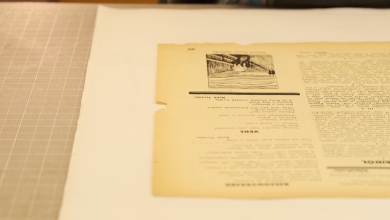A Prophet of Boom With Charts for Every Occasion

THE AFTERMATH: The Last Days of the Baby Boom and the Future of Power in America, by Philip Bump
Baby boomers, a reputedly upbeat lot, are probably not considering whether there will be enough space to inter them after they’ve all died. Philip Bump, cynical Gen Xer, goes right there and then some.
In his new book, “The Aftermath,” which considers the socioeconomic and political impact of America’s noisiest if no longer largest living generation, Bump measures the average coffin, multiplies its dimensions by the number of surviving people born in the United States between 1946 and 1964 — 74 millionish — and figures their corpses can be squeezed into 43 square miles. “We could simply take all of the land that’s part of the Walt Disney World complex and convert it into the most densely packed cemetery in North America,” he suggests. “The Grievingest Place on Earth.™”
One longs for more such lightning flashes of wit to jolt a study that’s commendably ambitious — immigration, racism, technology and climate change are considered — but can be digressive and (at least for a “word person”) numbingly number-centric.
Bump is a columnist for The Washington Post with a 1950s egghead vibe who writes an appealing newsletter called How to Read This Chart. Promotional copy for “The Aftermath” calls him “a journalist as adept with a graph as with a paragraph,” and indeed there are so many bars, squiggles, arrows, circles, dots, numbers and pictograms within these pages — 128 charts in total — that poring over them might make that hypothetical word person feel a little cross-eyed and frantic, like Goofy in the old cartoon short “How to Play Football.”
One of the more head-scratching charts is titled “The Pig Wends Its Way Through.” Bump is reviving an old metaphor used by the editor Landon Y. Jones in his 1980 book “Great Expectations,” a then-well-thumbed overview of the boomers that compared them, collectively, to a pig being swallowed by a python, representing America. And yet this porcine graph, which covers 110 years as the U.S. population shifts, ends up looking like a tall gray heron.
Another, called “How States Vary From the Future United States,” arranges states confusingly in “beeswarm plots” according to their current and projected racial representation. I preferred the cute and straightforward “Views of Trump, Measured as Temperatures”: Boomer women with college degrees had “cooler feelings”; boomer men without felt warmly. You get the feeling Bump could diagram even a marital spat.
Jones anointed America’s first baby boomer when he was at Money magazine (what’s more boomer than a magazine named Money?): Kathleen Casey Kirschling, born soon after midnight on Jan. 1 of ’46. An efficient interviewer who hopscotches from policy wonk to professor to woman on the street, Bump catches up with Kirschling in person at a Starbucks and chats with her about racism — something the supposedly idealistic boomers have failed most glaringly to eradicate.
He gets some expert reassurance about the much-feared looming depletion of Social Security, while rightly angsting about medical costs. And he gamely rents a golf cart and tootles around the Villages, the enormous senior housing community in the middle of Florida that’s beginning to fill up with you-know-whoomers. Apparently unaware they’re part of an enormous pig moving through a python in a way that looks like a heron, the most committed residents of the Villages call themselves “frogs,” because “they’re there until they croak.”
Leading boomer personalities like Jann Wenner are hitting peak memoir age and there are endless cultural histories of this generation, enumerating their artifacts and touchstones. “The Aftermath” is not so concerned with those, though a few get fleeting mention, like the special edition of the board game Trivial Pursuit whose questions — “Who played Mr. Novak?” — are no longer relevant, and Tom Wolfe’s famous article on the “Me” Generation that led with a woman complaining about her hemorrhoids at an EST session on the carpeted floor of the Ambassador Hotel, which Bump associates with closet copies of “Doonesbury” and Robert F. Kennedy’s assassination. He hasn’t watched “American Graffiti,” though he’s heard the soundtrack, and doesn’t even mention “The Big Chill,” pet rocks or the old commercial where the California Raisins march to the tune of “I Heard It Through the Grapevine.”
Rather he is trying to debunk closely held beliefs about the boomers as a voting, spending and ideological bloc. Wolfe declared that they abandoned religion, for example; “This was wrong,” Bump flatly asserts.Nor were they bottomlessly optimistic, boundlessly wealthy glam-parents figuring out how to live forever, when in fact they were statistically vulnerable to suicide and other “deaths of despair” even before Covid.
Dividing populations into age blocs is of limited utility, except for pollsters and planners — the young boomers needed more schools, and soon they’ll need more eldercare — but also a source of entertainment, a great American pastime like any other typology. “Generations are horoscopes,” Bump writes, “cross-generational perceptions are not necessarily accurate” and the millennials are coming to do battle with the robots. May we offer that python a nice piece of avocado toast?
THE AFTERMATH: The Last Days of the Baby Boom and the Future of Power in America | By Philip Bump | Illustrated | 416 pp. | Viking | $30



